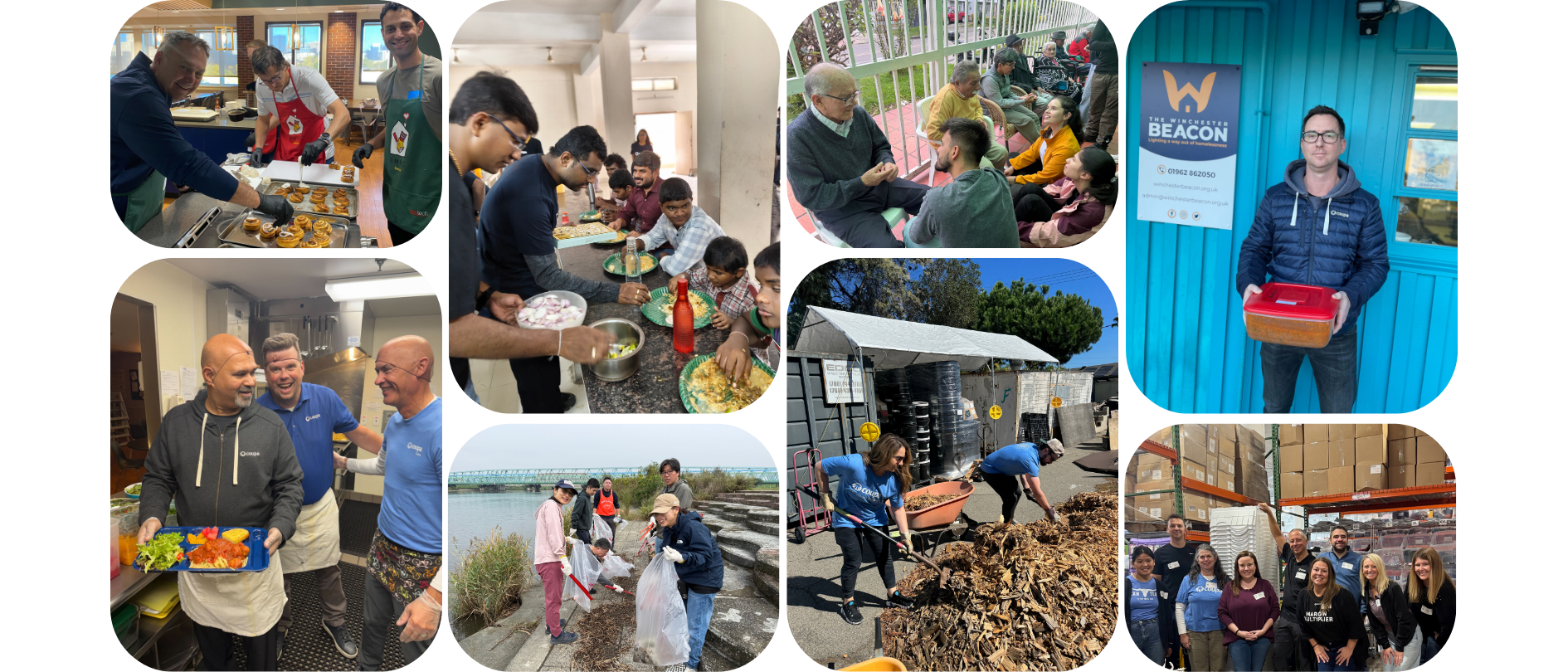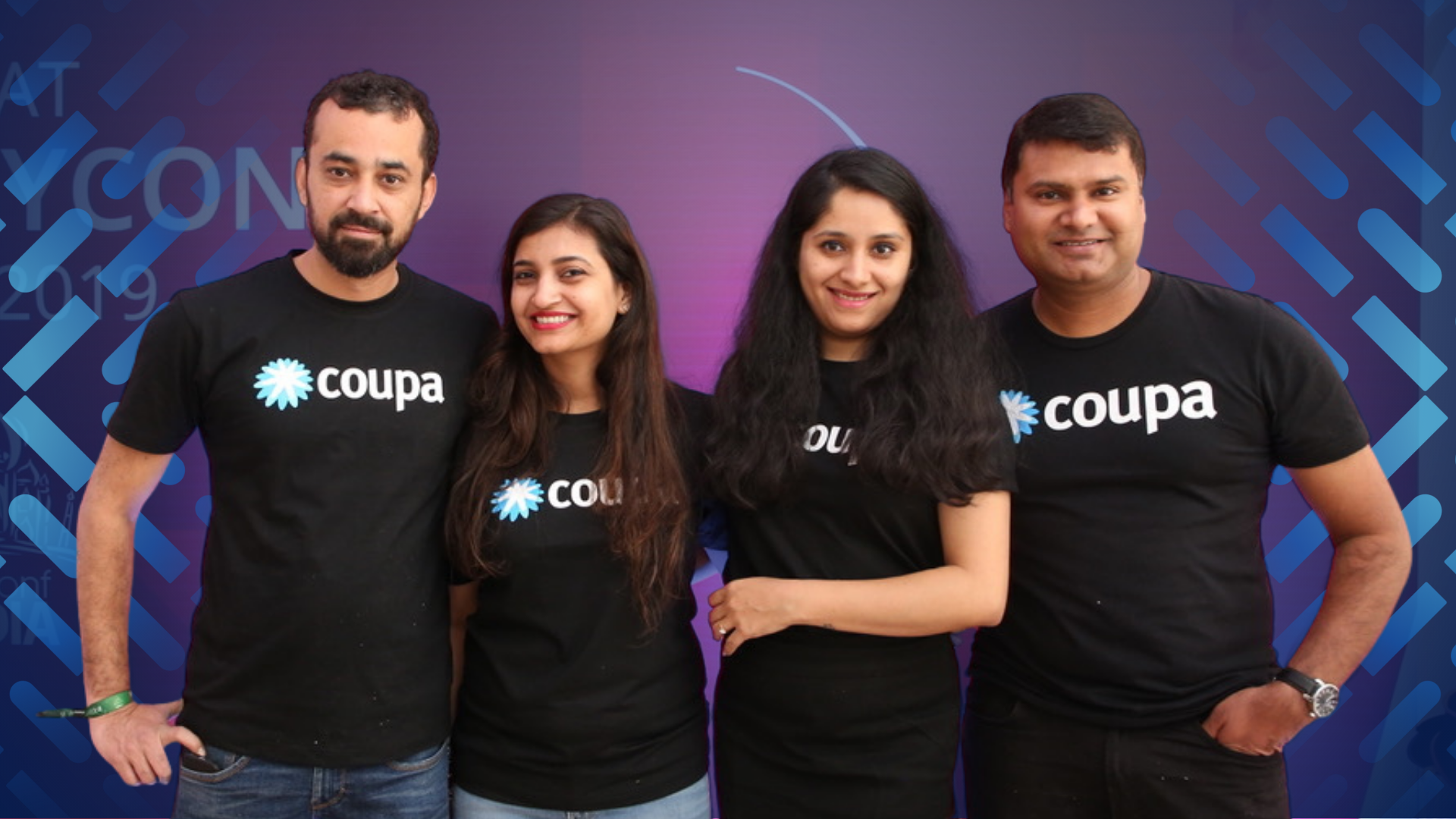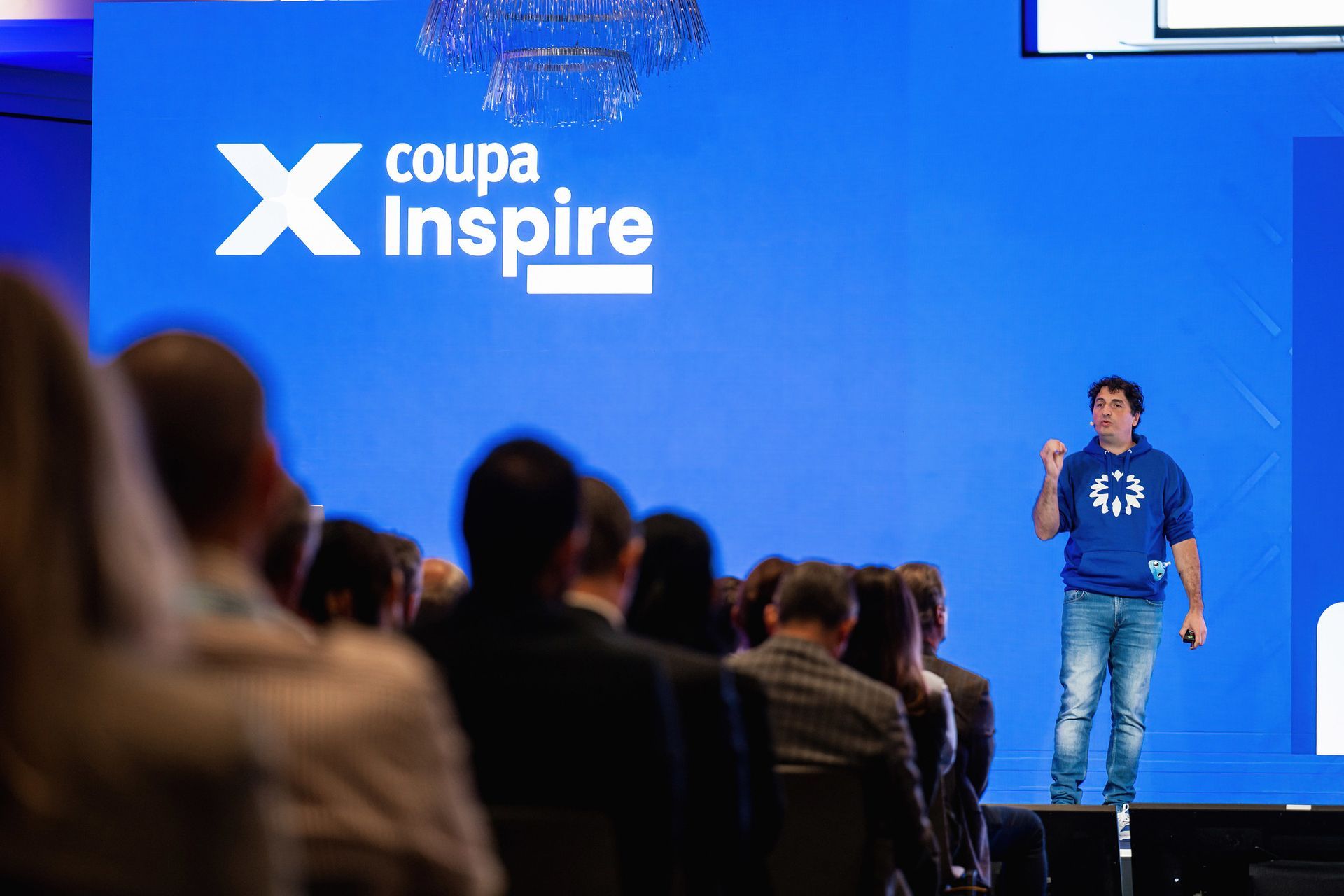3 Ways Coupa’s Development Team Designs Effective Search Functionality

Effective search functionality is critical to enhancing Business Spend Management (BSM), especially during economic downturns when supply chain issues or travel expenses could play major roles in a business’s success. However, not all searches surface the most relevant results or provide a user-centric experience.
For many engineers who want to design effective search, they know that inadequate functionality can lead to frustrating user experiences, poor purchasing decisions, and even compliance issues. So, how can engineers make search functionality more effective for BSM professionals?
Here are three considerations for designing effective search that our development team uses at Coupa.
1. Start with good data
The key to effective search functionality starts with rich, high-quality, current data.
Rich data
When designing search functionality, it’s important to include clean-fielded, basic data, like product names and prices. But more effective search happens when you layer in rich data, such as detailed descriptions, images, part numbers, manufacturer information, and more. For example, if a person wants to search by brand, part number, or use, that information must be part of the data. If it’s not, users may encounter irrelevant search results — or, worse, no search results at all.
High-quality data
Like many things, “garbage in” leads to “garbage out.” It does not help the search experience to add large volumes of poor, irrelevant data. For instance, if you have a list of items with accurate titles but unstructured or unclear descriptions, it might be better to avoid including those descriptions. The information should also be relevant and specific to the data. For example, generic placeholder text — like TBD, N/A, or office supply — in fields rarely adds value.
Current data
When users search, they want current information instead of outdated results. Many search algorithms are even biased toward more recent information. While this is a balance with performance considerations, keeping information curated so it is up to date and actively indexed makes for more effective search.
2. Use best-in-class search technology
After years of continuous improvement, search technology is more robust and effective than ever. Doug Cutting originally wrote Lucene in 1999, which was his fifth search engine. Today, Lucene is the foundation for both Elasticsearch
and SOLR, as well as a wealth of other search engine technologies. At Coupa, we use Elasticsearch as our search technology foundation.
Here are several things search technology does that a traditional relational database does not do.
Tokenize text into words
People rarely know the full title or phrase for what they are searching. Instead, they usually expect to type a few words and find what they need. Tokenization breaks all data into words so that can happen, and it must work with every language. At Coupa, that’s why we use Unicode Text Segmentation
to support global companies.
Understand the language
Modern search technology understands the formal and informal nuances of languages across the world. For example, a person might type a plural or a singular word, even when they likely expect to find both in search results. Similarly, a person might accent a word or not, regardless of whether the formal language says it should be accented. Still, they probably want both versions to appear in search results. At Coupa, our shopping search
supports over 30 different language models.
Technology that handles mistakes
End users make mistakes. They mistype or misspell. Search technology can check near variations to find matches. At Coupa, for instance, we use Elasticsearch to find spelling equivalents of terms that users may spell incorrectly in their search queries.
3. Iterate, iterate, iterate
There is no silver bullet with search. The best search comes from constant improvement. Google, for instance, changes their algorithm over 500 times per year. Similarly, our development team at Coupa finds a balance between algorithm changes being too conservative and slow to change versus making too many changes too quickly, which can disrupt customer satisfaction. Here are a few ways that we iterate on our approach to effective search.
Analyze the data
Search is extremely data-sensitive. An algorithm that works well on some data may work poorly on other data. That’s why it’s so important to analyze the data and understand its nuances. At Coupa, we analyze customer data and community data to do this. That data is then put to use in our AI-based classifiers to make the search results most relevant for a given customer's users and products.
Monitor user behavior
Search is ultimately about connecting a real-life user to search technology. To do that, it’s imperative to fully understand user behavior to achieve the right balance in search functionality. Our method of doing this at Coupa is to use our internally developed customer tool, Content Insights, to understand the searches being run and how effective they are.
Tune for probability, not perfection
There is often no "right" answer in search since the exact same search might mean one thing to one user and something else to another. Ultimately, tuning search for user behavior is a probability game — you have to engineer search functionality to provide the most relevant or likely results that address a user’s search intent.
Effective search is a journey and a never-ending one at that, but if users can quickly and easily find what they are searching for, they will thank you for it.

At Coupa, our people make the difference. From optimizing complex systems to driving new ideas that power global innovation, we believe in celebrating those who step up, lean in, and go beyond what’s expected. To recognize those exceptional efforts, the Coupa India Leadership Team introduced the Extra Mile Award, a quarterly honor that highlights individuals who demonstrate ownership, creativity, and impact. These are the Coupanians who set new standards for excellence and inspire others to do the same. This quarter, we’re proud to recognize three exceptional engineers—Gyanendra Ojha, Pritesh Mantri, and Akshay Sable—whose technical brilliance and collaborative spirit are helping us build smarter, more resilient systems to shape the future of spend management.

In the world of engineering here at Coupa, I’m reminded of one of our core beliefs: powerful systems should still feel simple. Yet as organizations grow, even everyday tasks such as requesting equipment, submitting a purchase, or finding the right workflow can become more complex than they should. Tracking back to early 2024, our team asked a simple question with big implications: What if we could make the user experience for these requests effortless? What started as one little idea has grown into Smart Intake & Orchestration (SIO), a reimagined way for people to navigate requests across the Coupa platform. How It All Began Coupa has been scaling fast. With more capabilities and more global customers, complexity naturally grows too. We realized that incremental fixes weren’t going to be enough. We needed to transform the entire end-to-end journey. Our goal was clear: Make every request simple, intuitive, and human, regardless of the user or the workflow behind it. Building Something New Together I joined the project early and quickly saw its potential impact. It became one of the most collaborative efforts of my career with Product, UX, engineering, and cross-functional partners all coming together with a shared purpose. We created a flexible, scalable experience framework that supports users today and grows with them for tomorrow. This wasn’t just innovation to gain business efficiency. It was innovation rooted in empathy for our customers using our platform every day. Facing Challenges and Growing from Them With any ambitious initiative, there were moments where decisions had to be made with limited precedent. We made decisions with limited precedent, tight timelines, and alignment across many teams. Some key challenges included: Balancing speed with thoughtful execution Experimenting while staying grounded Ensuring teams worldwide rallied around a shared vision Prioritizing customer needs with long-term strategy in mind These challenges made us better and reminded us to bring people in early, test ideas quickly, and keep the user experience at the heart of everything. Launching, Learning, and Iterating We officially introduced Smart Intake & Orchestration at our Coupa Inspire customer event in May 2025. Since then, we’ve partnered closely with customers to refine, evolve, and expand the capabilities. Today, many Coupa customers are already using SIO, with more on the horizon. Here is a demo and overview of SIO for those interested in learning more. It’s just the beginning and the momentum is exciting.

Ever wonder what really happens behind the scenes of a Coupa hire? In Episode 4 of our Shaping What’s Next series, we're pulling back the curtain on the full hiring experience, from initial first outreach to first day on the job. In this episode, we give you three perspectives in the process: first a recently hired Coupanian, the recruiter who discovered her, and the hiring manager who made the final call. Together, they share the process from each of their vantage points. You’ll hear how curiosity, collaboration, and Coupa’s Core Values show up in every step, from a warm first conversation to that moment when it just “clicks.” If you’ve ever thought about joining Coupa, or if you're just curious how we approach finding and growing great talent, take a peek at this inside look. Watch Episode 4: The End-to-End Hiring Journey and see how we’re shaping what’s next, one hire at a time.

Recently, Coupa India welcomed Chief Human Resources Officer Susan Tohyama and Chief Product & Technology Officer Salvatore (“Salva”) Lombardo for an unforgettable week of connection, collaboration, and culture in full force. They engaged with teams across offices including over 120 employees who have joined Coupa in the Product and Technology organization. From lively Town Halls in Pune and Hyderabad, to innovation workshops and high-energy demo sessions, the visit celebrated what makes Coupa India a vital part of our global success story: a shared drive to innovate, build, and shape what’s next — together.

Coupanians around the world unite to give back during Global Impact Week 2025. At Coupa, we believe that business is a force for good — and our greatest impact comes from the people behind our technology. During Global Impact Week 2025, employees across the world came together to give back to their local communities, embodying our sustainability and impact commitments and showing what it means to be a purpose-driven, people-first company. A week of purpose in action From river clean-up in Tokyo to blood drives in Pune, food bank volunteering in Denver to animal shelter projects in Boston, supporting cancer patients in Dublin, every act of service reflected the same belief: when we care for our communities, we help create a more sustainable, connected world. Highlights from around the globe:: The Americas Atlanta, GA and Denver, CO: Volunteers cooked breakfasts at the Ronald McDonald House and supported local food banks, bringing warmth and nourishment to families in need. Boston, MA: Teams created care packages for shelter animals, combining creativity and kindness. Minneapolis, MN: Employees volunteered at a women’s shelter, cooking, cleaning, and serving meals to 28 women and children. Philadelphia, PA: More than 50 bins of clothing for children in need were sorted and packaged by Coupanians with Cradles to Crayons. San Diego, CA: Volunteers got their hands dirty at the Solana Environmental Center, weeding gardens, planting lavender, and testing rain barrels in support of sustainability. Bogotá and Medellín, Colombia: Our teams made a powerful impact — from packing essential food kits for local foundations supporting seniors and people with disabilities, to hosting a Life Purpose Talk with Fundación Alma Perruna on compassion and community. APAC Tokyo, Japan: Teams joined the Arakawa River Cleanup, removing hazardous waste and protecting their local environment. Singapore : Volunteers supported Willing Hearts, a soup kitchen, by providing meals to those in need, including the elderly, low-income families, people with disabilities, and migrant workers.

At Coupa, we’re proud to celebrate Stella Yen-Chiao Lee, recently named a 2025 Women in Supply Chain Award recipient by Food Logistics and Supply & Demand Chain Executive . Recognized in the Trailblazers category, Stella was honored for her leadership, mentorship, and impact in shaping the future of supply chain. Her story is also a glimpse into life at Coupa and shaping your career — where your ideas, expertise, and passion can spark real change. We asked Stella to share her thoughts on this amazing recognition. What does receiving this award mean to you personally and professionally? It’s humbling to have my work recognized in a field I care deeply about. Personally, it’s inspiring to be celebrated alongside so many talented women who are shaping the future of supply chain. Professionally, it’s a reminder of how far I’ve come and the impact I can make. It motivates me to keep growing, learning, and supporting other women in the supply chain community. Looking back, what experiences or mentors shaped your leadership journey? When I joined Coupa (formerly LLamasoft) in 2011, we were still a small company growing quickly. I was asked to step into a project lead role before I felt ready. That challenge pushed me to stretch beyond my comfort zone, learn fast, and build confidence. I was also lucky to have leaders who trusted, mentored and encouraged me to speak up. That early trust gave me confidence in my perspective and shaped how I lead today: I believe in staying curious, empowering my team, and embracing growth through new challenges. What advice would you share with women early in their careers? Say yes to opportunities, even if they’re out of your comfort zone. Stay curious and ask questions. And remember that supply chain touches everything — the more you connect with people across teams and functions, the stronger you’ll become as a leader. What excites you most about the future of supply chain? The pace of change. With AI, real-time data, and optimization tools like Coupa’s Supply Chain Guru, we’re not just reacting — we’re predicting and planning. That creates opportunities to be more efficient, more resilient, and more sustainable. It’s an exciting time to be part of this industry. How do you see your role — and Coupa — driving the future of supply chain? For me, “building tomorrow together” is about teamwork. At Coupa, we’re constantly learning from our customers and each other. My role is to stay close to the real-world challenges our customers face and make sure those insights flow back into our products. That feedback loop means we’re always improving — and that together, we’re shaping what’s next for supply chain. Why it matters? Stella’s recognition comes on the heels of Coupa being named #16 on Fast Company’s 2025 Best Workplaces for Innovators . Both honors highlight a common denominator: our people. Coupanians are at the heart of what makes our company a great place to work. From supply chain innovation to employee-led initiatives, we’re helping shape what’s next. Ready to shape what’s next in your career? Explore opportunities at Coupa Careers and join our Talent Community to stay connected.

At Coupa, belonging isn’t an initiative—it’s a value we live every day in our personal and professional lives. One of our key Coupa Core Values–Cultivating Belonging–reflects a fundamental truth: when people feel seen and supported, they exude confidence, clarity, and the courage to grow. That’s not just good for our people—it’s good for innovation, business, and the communities we serve. As our Coupa CEO Leagh Turner puts it: “Cultivating Belonging is about creating the space where growth is possible for every person. That’s how we build a better company—and a better experience for everyone in it.” This values-based approach drives our Coupa Empower Employee Resource Group, dedicated to unlocking the impact of women in business. One of its most transformative initiatives? A powerful partnership with MEvolution, a science-based energy management program designed to help individuals reclaim their wellbeing, purpose, and power. From Burnt out to Breakthrough - MEvolution When “Pam,” a Coupa employee, joined the MEvolution Energy Booster program, she was overwhelmed—balancing remote work, motherhood, and caregiving during the COVID pandemic. Through MEvolution’s eight-week guided experience, she learned to identify energy leaks, set boundaries, and prioritize her needs. The result? A smiling, re-energized woman who said, “Taking care of myself helped me take better care of everyone else—and thrive in my career.” Inspired by this impact, the program was extended to 20 women across time zones and functions. These participants didn’t just learn to manage their energy—they transformed how they show up at work and in life. They reported better focus, reduced anxiety, stronger boundaries, and greater happiness and fulfillment. One key ingredient? A commitment to give back, paired with the program’s completion. Together, these women served over 185 families, packed 14,000 lbs of food, gifted 1,000 Christmas presents, and more—proving that personal energy and purpose-driven impact go hand in hand. Programs like MEvolution truly humble you to see the needs out there—and inspire you to serve more regularly. As we explore other ways to give back, the energy and impact that MEvolution sparked continues to resonate. It showed us what’s possible when individuals are empowered to care for themselves and others. At Coupa, we carry that spirit forward—supporting initiatives that help our people grow, give back, and shape what’s next with purpose and compassion. Women Leading With Wisdom Beyond great initiatives such as MEvolution, our Coupa women are breaking barriers and shaping what’s next—in engineering, legal, product, technology, and beyond. Their voices are helping redefine success and leadership with authenticity, resilience, and strength. Amy Sweeney, CIO: “You don’t have to have the perfect background. You set your mind, work hard, and do it your way.” Michelle Bonam, VP Talent Strategy: “You get sponsors by cultivating relationships, and you develop these relationships through the little things you do”. Priya Gopinath, VP Engineering: “Your uniqueness is your strength, and your confidence is your superpower.” These women are a testament that leadership comes in many forms—and that when we create space for authenticity, we unlock powerful results. What’s Next? Coupa’s commitment to empowering women isn’t about checking boxes—it’s about building a culture where everyone can rise. We’re continuing to expand programs like MEvolution, investing in ERGs like Empower, and fostering environments where feedback, sponsorship, and leadership development are part of the everyday experience. If you’re looking for a workplace that champions growth, equity, and purpose—not just for women, but for everyone—we invite you to learn more about life at Coupa. Because when women thrive, we all rise. Want to learn more? Check out Coupa Careers and join our vibrant Talent Community.

In India, we often use the word “fresher” to describe recent graduates or candidates with minimal work experience. This term can also apply to someone moving into a field where they don’t yet have direct experience. What freshers bring is energy, curiosity, and potential—but guidance and mentoring for this early in career talent helps them make that transition much smoother into a corporate environment. As a recruiter with a Bachelor’s in IT and over five years in talent acquisition, I’ve worked with “fresh” graduates and seasoned professionals. Having sat on both sides of the table myself, I’ve seen how small details can make or break an interview. Here are some lessons I wish every fresher knew—shared from real moments in my recruiting journey. Resume hygiene is non-negotiable 📝 I can’t count the number of times I’ve seen resumes with typos in email IDs (yes, “gamil.com” instead of “gmail.com”), or resumes saved in a format the system couldn’t read. I’ve had to pass on strong candidates simply because their details never came through the ATS. What I tell freshers: Save your resume as Word or PDF, use clean fonts, and always double-check your contact details. Even the file name matters—Richa_Kadam_Resume.pdf looks far more professional than just Resume.pdf. Do your homework 🔍 I once asked a candidate why they wanted to join our company, and the answer was: “I don’t know much about what you do.” Compare that to someone who said, “I was impressed by your recent product launch in AI—it aligns with my final-year project.” Who do you think stood out more? Lesson: A little research on the company’s website, products, and values makes you memorable and shows genuine interest. Projects speak louder than marks💡 Grades matter, but in interviews, your projects and internships tell the real story. I’ve seen resumes that simply list “E-commerce Website” and leave it at that. But one candidate wrote: “Built a responsive e-commerce app using React & MySQL—reduced load time by 30%.” That one line showed me their skills, initiative, and impact. Takeaway: Don’t just say what you did—show the results.

At Coupa, celebrating our people is part of our culture. Whether it’s driving innovation behind the scenes or stepping up in moments that matter, we recognize and reward those who go above and beyond to help us shape what’s next. That’s why the Coupa India Leadership Team created the Extra Mile Award —a quarterly recognition that honors individuals who demonstrate excellence, resilience, and impact. It celebrates those whose contributions drive results, inspire teams, and embody our Coupa Core Values. This quarter, we’re proud to recognize two standout engineers whose dedication helped lead a global rollout to success: Sourabh Jagadale and Sayan Acharjee. Their work on deploying the Pulse Agent for Elasticsearch observability demonstrates what it means to combine deep technical skill with strong leadership and cross-functional collaboration. Joining forces, Sourabh and Sayan helped the Coupa engineering teams get better insights into how the system is performing, detecting issues faster and more proactively.

As the global economy continues to evolve, Coupa is at the forefront—transforming how companies make decisions and trade with one another. From automating workflows to optimizing entire supply networks, we’re building a new intelligent enterprise platform powered by agentic AI. But equally important is having the right people in place to guide this transformation and vision. We recently sat down with Salvatore Lombardo, Coupa’s Chief Product & Technology Officer, to talk about his AI vision, the company’s compelling data advantage, and why now is a career-defining opportunity for engineers to help us build tomorrow together. What drew you to Coupa? Salvatore: After leading product and engineering for global procurement platforms for many years, I saw an inflection point coming—where AI, data, and cloud-native architecture could converge to fundamentally reshape how companies make decisions and operate. I joined Coupa almost a year ago because it was clear this was the place to turn that vision into reality. Coupa had the foundation: a unified platform, deep domain expertise, and a uniquely rich dataset built from real spend transactions across a global network. What we’re building now isn’t incremental—it’s a new operating model for enterprise decision-making. One powered by agentic AI, fueled by trusted data, and designed to help businesses move faster, collaborate smarter, and create lasting value. This is the most exciting time to be a part of Coupa. We’re scaling fast and seeking talent that wants to shape not just a product but build a platform and lead the industry.

